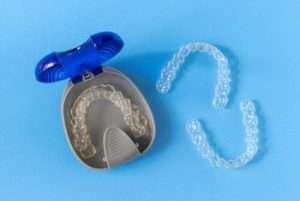If you’re considering teeth straightening, chances are you’ve come across two primary orthodontic treatment options: Invisalign vs braces. Both Invisalign aligners and traditional braces are effective at correcting crooked teeth and improving teeth alignment, but they have distinct advantages and disadvantages.
In this detailed comparison, we’ll explore how Invisalign treatment compares to traditional metal braces, focusing on treatment duration, comfort, aesthetics, oral hygiene, and cost. By the end, you’ll have a clearer understanding of which dental treatment might be best suited to your needs.
1. The Basics: How Invisalign and Braces Work
Before discussing the differences between Invisalign and braces, it’s important to understand how each orthodontic treatment works. Both aim to correct crooked teeth, improve tooth alignment, and enhance oral health, but they do so using different mechanisms.
Traditional Braces: Metal Brackets and Wires for Controlled Movement
Traditional braces have long been a tried-and-tested solution for aligning teeth. They use a system of metal brackets and wires that exert steady pressure, gradually guiding teeth into their proper position.
- Metal Braces: The most widely used option, consisting of traditional metal brackets and wires.
- Ceramic Braces: Functionally similar to metal braces but with tooth-coloured brackets for a more discreet appearance.
- Lingual Braces: Attached to the back of the teeth, offering a nearly invisible look, though they may cause more discomfort.
Braces treatment is highly effective for all levels of orthodontic issues, from minor misalignments to severe bite problems. However, the presence of brackets and wires can make them more noticeable and require extra care when eating and cleaning.
Invisalign: Virtually Invisible Aligners for a Comfortable and Hassle-Free Experience
Invisalign clear aligners use a series of customised, transparent Invisalign trays that gradually move teeth into alignment. Unlike braces, Invisalign does not use metal brackets and wires, making it a preferred choice for those who prioritise aesthetics and comfort.
How Invisalign Works:
- An impression of your teeth is taken to create a customised set of Invisalign aligners.
- Each set of aligners is typically worn for 1 to 2 weeks before moving to the next stage.
- Over time, the aligners gradually shift teeth into the desired position without the need for brackets and wires.
Invisalign treatment is ideal for those seeking a virtually invisible alternative to traditional dental braces, offering more flexibility in daily life. However, it requires patient compliance, as the trays must be worn 22 hours per day for optimal results.
2. Aesthetics: Invisalign’s Clear Advantage
One of the biggest factors in the Invisalign vs braces debate is appearance.
Traditional Braces: Visible and Sometimes Noticeable
- Metal braces are highly noticeable, especially with metal brackets and wires.
- Ceramic braces are less conspicuous but still visible.
- Lingual braces are hidden behind the teeth but can be uncomfortable.
Invisalign: Discreet and Virtually Invisible
- Clear aligners are barely noticeable.
- Ideal for adult patients and professionals who prefer a subtle teeth straightening option.
- No metal brackets and wires to draw attention to your smile.
If you prioritise aesthetics, Invisalign offers a significant advantage over traditional dental braces.
3. Comfort and Convenience: Why Invisalign Feels Better
Comfort and convenience play a crucial role in the decision-making process when choosing an orthodontic treatment. Braces vs Invisalign offer unique experiences, but many patients find Invisalign aligners significantly more comfortable and easier to manage. Here’s why.
Braces: The Discomfort of Brackets and Wires
Traditional metal braces rely on metal brackets and wires to move teeth into their correct position. While effective, they can cause discomfort in several ways:
- Irritation to cheeks and gums – Metal brackets and wires may irritate the soft tissues in your mouth, potentially causing discomfort, soreness, or ulcers.
- Tightening appointments can be painful. Regular braces treatment requires periodic adjustments, during which the metal wires are tightened, often causing discomfort for a few days afterwards.
- Restrictions on food – Sticky foods and hard foods can get stuck in brackets and wires, requiring extra care when eating.
- Speech adjustments – Some braces patients struggle to speak clearly, especially with lingual braces.
While traditional braces provide precise control over tooth movement, they can be challenging for younger patients and adults who prefer a smoother experience.
Invisalign: A More Comfortable and Flexible Experience
Unlike braces, Invisalign clear aligners are designed for comfort and ease of use. These nearly invisible aligners are crafted from smooth plastic, removing the need for metal brackets and wires. Here’s why Invisalign treatment is often the more comfortable choice:
- No Sharp Brackets or Wires
- Invisalign aligners have no metal brackets that can irritate.
- No risk of metal wires poking or breaking.
- Comfortable fit with no need for wax or special relief measures.
- Less Painful Tooth Movement
- The gradual shifting of teeth with Invisalign trays causes less pressure than the tightening process of braces treatment.
Most Invisalign patients experience only mild discomfort when switching to a new set of aligners.
- Removable for Eating and Drinking
- No food restrictions – enjoy whatever you like without worrying about sticky foods damaging brackets and wires.
- Unlike braces, Invisalign patients can take out their aligners for meals, making the treatment more convenient.
- Easier to Maintain Good Oral Hygiene
- With braces, it can be hard to clean around metal brackets and wires, increasing the risk of gum disease and tooth decay.
- Invisalign aligners are removable, allowing for good oral hygiene practices like regular brushing and flossing.
4. Oral Hygiene: Keeping Your Teeth Healthy During Treatment
Maintaining dental hygiene is crucial during orthodontic treatment to prevent gum disease and tooth decay.
Traditional Braces: More Challenging to Keep Clean
- Brackets and wires make brushing and flossing difficult.
- A greater risk of plaque accumulation and tooth decay.
- Special flossing techniques or water flossers are required to maintain oral health.
Invisalign: Easier Oral Hygiene Routine
- Invisalign trays are removable, allowing for regular brushing and flossing.
- Lower likelihood of tooth decay and gum disease.
- Encourages good oral hygiene habits with fewer restrictions.
When it comes to maintaining good oral hygiene, Invisalign aligners clearly outperform braces.
5. Treatment Duration: How Long Does It Take?
One of the most common questions in the Invisalign vs braces debate is how long the entire treatment takes. The answer depends on several factors, including the complexity of the orthodontic issues, patient compliance, and the type of orthodontic treatment chosen.
While both Invisalign aligners and traditional braces can achieve a straighter smile, their timelines can differ.
Braces: A Longer but More Versatile Treatment Option
For patients with more severe teeth alignment issues, braces treatment is often the preferred method. However, this comes with a longer treatment duration than the Invisalign treatment.
How Long Do Braces Take?
- Traditional metal braces typically take between 18 to 36 months.
- Lingual braces or ceramic braces may take longer due to their different designs.
- More complex dental issues (such as significant overbites or crowded teeth) may extend the entire treatment duration.
- Braces require regular adjustments every 4 to 6 weeks, which can extend treatment time if appointments are missed.
Braces treatment is highly effective, but the presence of metal brackets and wires can make the journey more demanding, particularly for adult patients who want a faster and more discreet solution.
Invisalign: Faster Results with the Right Compliance
For those who prioritise a shorter treatment duration, Invisalign aligners can deliver results more quickly—if worn as directed.
- Invisalign treatment usually takes between 12 and 18 months.
- Some mild cases of teeth straightening can be completed in as little as 6 months.
- The speed of treatment depends on patient compliance—aligners must be worn at least 22 hours per day to stay on schedule.
- Fewer dental visits are required since patients switch to a new set of Invisalign trays every 1 to 2 weeks.
Compared to braces treatment, Invisalign offers a faster and more convenient experience for many patients. However, skipping aligner wear or removing them too often can extend treatment time.
Factors That Affect Treatment Duration
No matter if you choose braces or Invisalign, several factors can affect the duration of your orthodontic treatment:
Complexity of Your Case:
- Minor teeth alignment issues = Shorter treatment time.
- Severe crowding, bite issues, or spacing problems = Longer treatment time.
Patient Compliance:
- Invisalign patients must wear their invisible aligners consistently for 22 hours per day.
- Braces patients must follow their dentist’s advice to avoid delays (e.g., avoiding damage to brackets and wires).
Age of the Patient:
- Younger patients often see faster tooth movement as their bones are still growing.
- Adult patients may experience a slightly longer timeline.
Regular Check-ups:
- Missed dental visits can delay progress in both Invisalign and braces treatments.
Which Treatment Is Faster?
If speed is a priority, Invisalign treatment may be the better choice, as it typically results in a shorter treatment duration than braces. However, braces treatment is still the preferred choice for complex dental issues that need more precise and controlled tooth movement.
For the fastest and most effective results, it’s essential to follow your dentist’s recommendations, whether you choose braces or Invisalign.
6. Fewer Dental Visits: Invisalign Saves You Time
With braces, adjustments are needed every 4 to 6 weeks to tighten metal wires and check progress.
Invisalign patients, however, benefit from fewer dental visits, as they switch to a new set of aligners every 1 to 2 weeks and only need occasional check-ups with their dental professionals.
7. Cost Comparison: Invisalign vs Braces Cost
Cost is a significant factor when choosing between Invisalign and braces. While both are effective treatment options for teeth straightening, their pricing varies based on factors such as treatment complexity, duration, and the level of customisation required. Here’s a breakdown of the starting prices for both treatments in Australia.
Braces Cost: A More Budget-Friendly Option
Traditional braces are generally the more affordable orthodontic treatment option, particularly for those who require extensive tooth movement or have complex dental issues.
Starting Prices for Braces in Australia:
- Metal braces – From $4,000
- Ceramic braces – From $6,000
- Lingual braces – From $9,500
The cost of braces treatment depends on the type of brackets and wires used, the complexity of the case, and the treatment duration.
Invisalign Cost: A Premium, Customised Treatment
Invisalign treatment is usually more expensive than traditional metal braces due to its advanced technology, customisation, and aesthetic benefits. However, for adult patients and those who prioritise comfort, convenience, and aesthetics, the higher cost is often justified.
Starting Prices for Invisalign in Australia:
- Invisalign treatment – From $6,500
The total cost of Invisalign varies based on the number of Invisalign trays required and the entire treatment duration. Invisalign aligners are digitally designed and made specifically for each patient, making them a more tailored and comfortable solution than traditional metal brackets.
Which Treatment Offers Better Value for Money?
While braces cost less upfront, Invisalign aligners provide added benefits such as fewer dental visits, better oral hygiene, and a discreet appearance.
If affordability is your main concern, traditional braces provide a more budget-friendly solution. However, if you value convenience, aesthetics, and comfort, the cost of Invisalign may be worth the investment.
Before making a decision, it’s best to consult with dental professionals to determine which teeth straightening option is the right fit for your needs.
8. Who Should Choose Invisalign Over Braces?
- Adult patients seeking a discreet, virtually invisible treatment.
- Those prioritising comfort and convenience.
- Individuals who want an easier time maintaining dental health.
- Patients with mild to moderate orthodontic issues.
Braces treatment is better suited for:
- Younger patients may struggle with patient compliance.
- Severe orthodontic issues requiring complex adjustments.
- Individuals who do not mind wearing braces for longer treatment durations.
Final Thoughts: Invisalign vs Braces—Which Should You Choose?
When weighing braces vs Invisalign, the right treatment option depends on your unique orthodontic issues, lifestyle, and priorities.
- Invisalign treatment is best for those seeking a discreet, comfortable, and flexible solution.
- Braces treatment remains the go-to choice for more complex dental issues requiring precise control.
Both are popular orthodontic treatments, but Invisalign offers key benefits like fewer dental visits, better oral hygiene, and virtually invisible aligners. For patients exploring options, including Invisalign solutions available in the Bella Vista area, understanding the differences can make your decision clearer.
If you’re ready to begin your orthodontic journey, schedule an appointment with Dr Jack at (02) 8806 3712 and (02) 9000 1778 today to determine the best way to achieve a straighter smile with confidence.
References
- Cleveland Clinic. (n.d.). Teeth braces. Retrieved from https://my.clevelandclinic.org/health/treatments/24601-teeth-braces
- Colgate. (n.d.). How to practice oral hygiene with braces. Retrieved from https://www.colgate.com/en-us/oral-health/kids-oral-care/how-to-practice-oral-hygiene-with-braces
- Healthline. (n.d.). Does Invisalign work? Retrieved from https://www.healthline.com/health/does-invisalign-work
- American Association of Orthodontists. (n.d.). 7 common bite problems. Retrieved from https://aaoinfo.org/whats-trending/7-common-bite-problems/
- WebMD. (n.d.). Gingivitis & periodontal disease. Retrieved from https://www.webmd.com/oral-health/gingivitis-periodontal-disease












